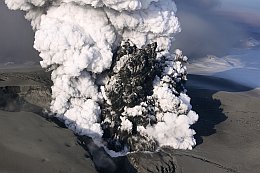
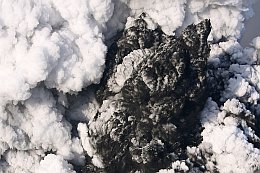
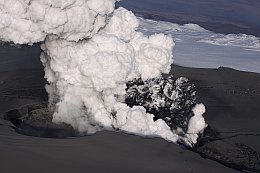
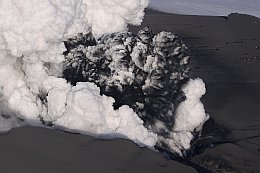
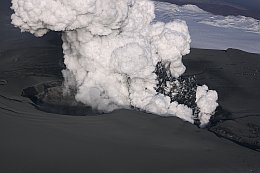
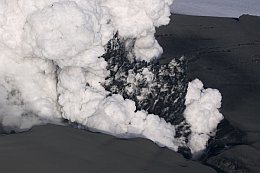
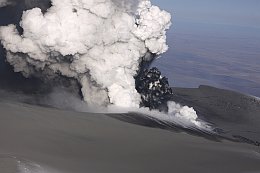
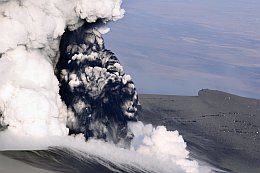
But during the first turn the behaviour changed and at first
black lances arose between the white steam mixed with ice
boulders which flew in a flat ballistics against the crater
walls. Smaller ice rocks created bizarre white spirals by
leaving the black and white patterned main explosion cloud.
In a few seconds the ash discharges piled then up to a 1,5
km tower. In a flight distance of one mile an impressively
scenario took place which could not get topped in its giant
beauty.
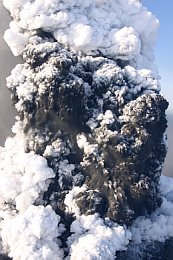
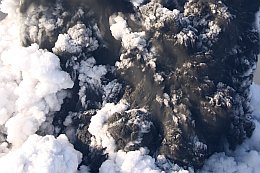

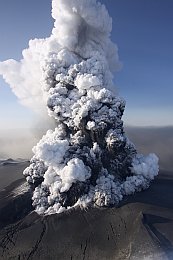
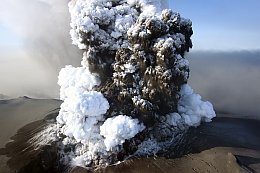
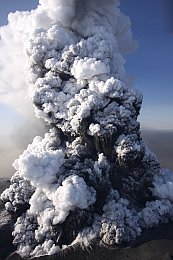
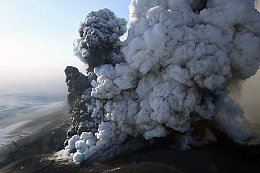
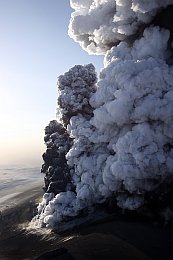
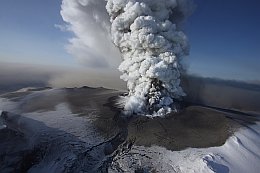
Elegant the black lances pierced through the ultra white
steam very fast, but due to the huge dimension everything
appeared in slow-motion. Here I founded the symbolic name
Ice-Volcano. This fits most suitable together with the
nature shape of Iceland’s mountain landscapes. Then
I looked to Marco
who was born and resident in Italia,
and I said to him. This view remembers me to a big
mountain
of Straciatella.
Marco smiled...
The Fire Volcano
Still fascinated from the second flight the better weather
condition should allow a more detailed view into the crater.
The reason was, that the activity modus changes at the 19th
of April once more. In fact the eruption intensity increased
steady since the 17th of April
to 5-10% in
comparison to the first days.
But this was still enough power
for the next days to close the international airport at
Keflavik
at Friday the 23rd of May. This new condition
was approved officially by the Icelandic volcanologist in
the daily news. But this phase of activity offered a nearly
free view into the seemingly tumultuous inner life of the
crater of Eyjafjalla. At our third flight we could see the
lava bubbling and blasting situated in the north of the
crater base, accompanied with big shockwaves expanding
through the whole clouds.
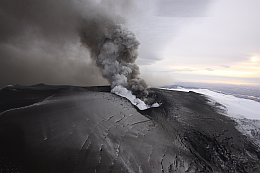
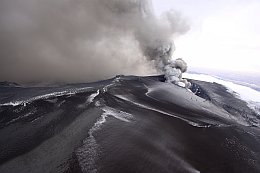
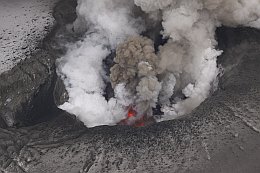
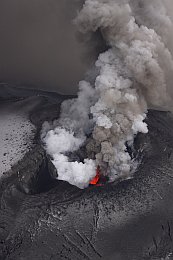
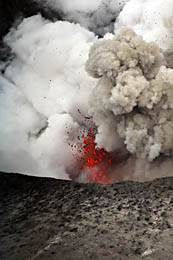
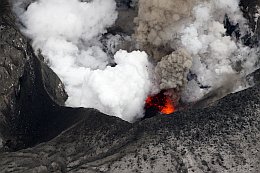
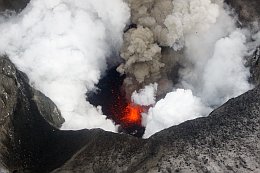
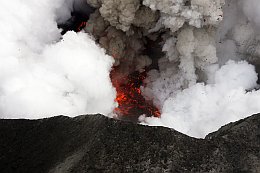
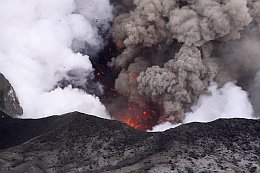
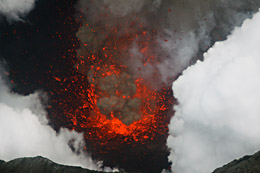
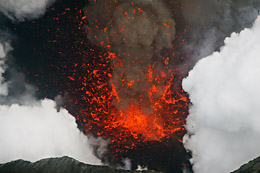
Sidewise big lava shreds appeared behind the ash and steam
clouds. Glowing lava boulders with a size of an omnibus were
catapulted easily 300m behind of the edge. The shock waves
did also shocked and thrilled our helicopter, and we could
hear clearly the hard bangs through the rotor noise.
Sometimes the windows vibrated strongly. But this close
distanced over flight gave us a lot of fun.
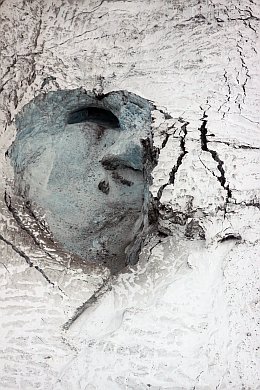
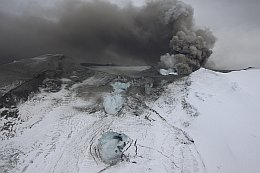
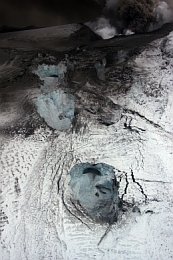
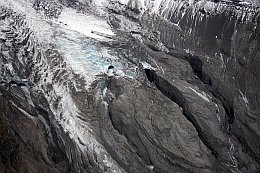
The meltwater was running down in channels with an
estimated diameter up to 50m
through the volcano glacier. During and after this event the
tubes crashed down and left big ice holes. Since the 2nd of
May it seems that a lava flow is blazing a trail underneath
the ice surface. Everyone is waiting now if the lava flow
will brake through the glacier tongue in the below valley
zone.
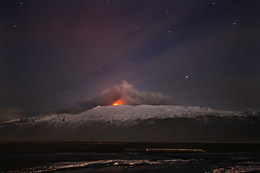
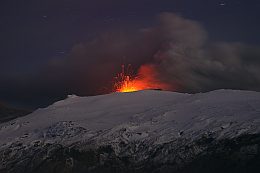
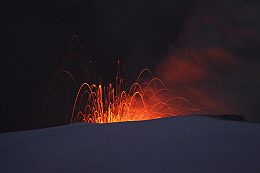
And here is the night view from a distance of 10km. However
the frosty strong wind made it nearly impossible to make good
exposures. But this doesn't matter....
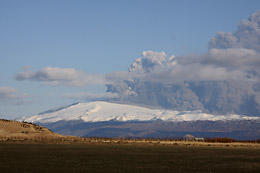
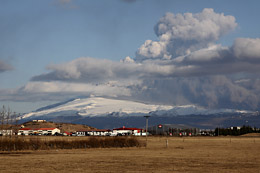
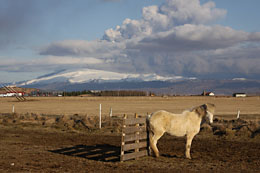
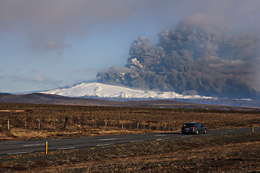
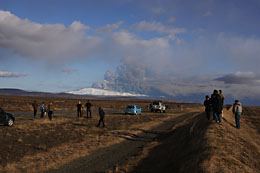
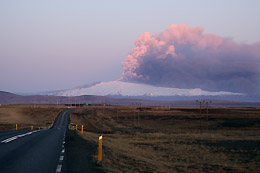
The volcano seen from the western direction (near Hella, the
4/17/2010)